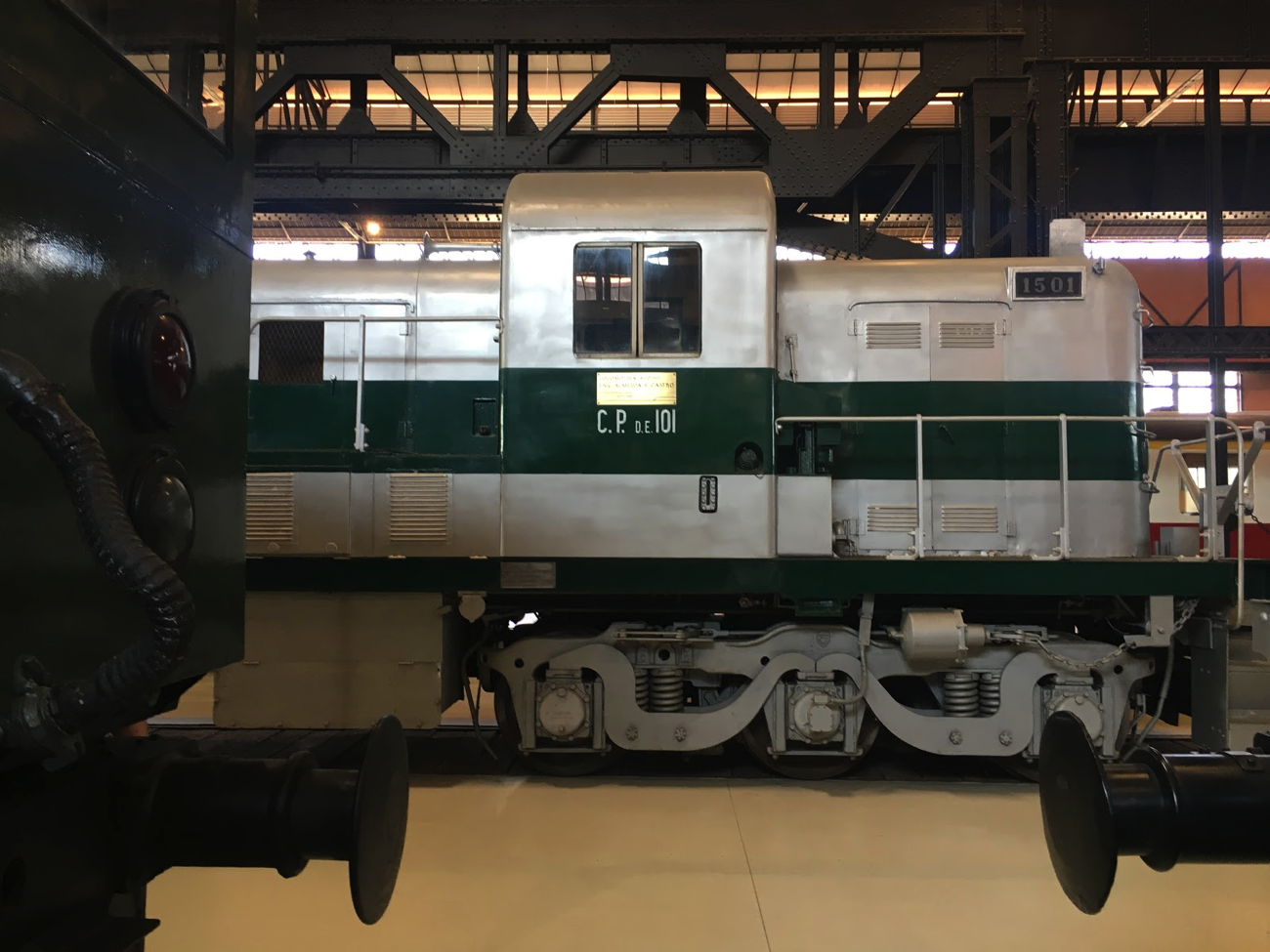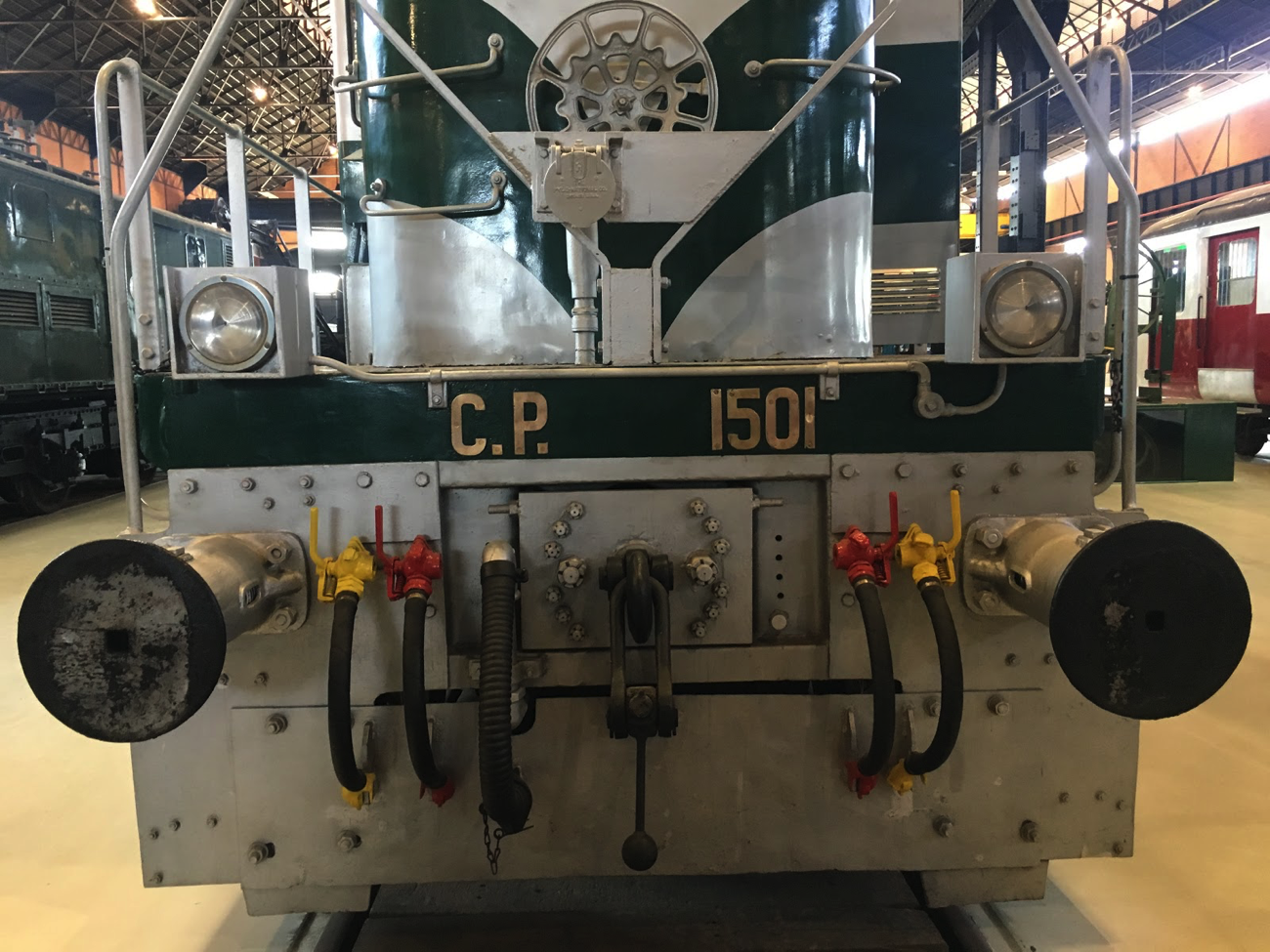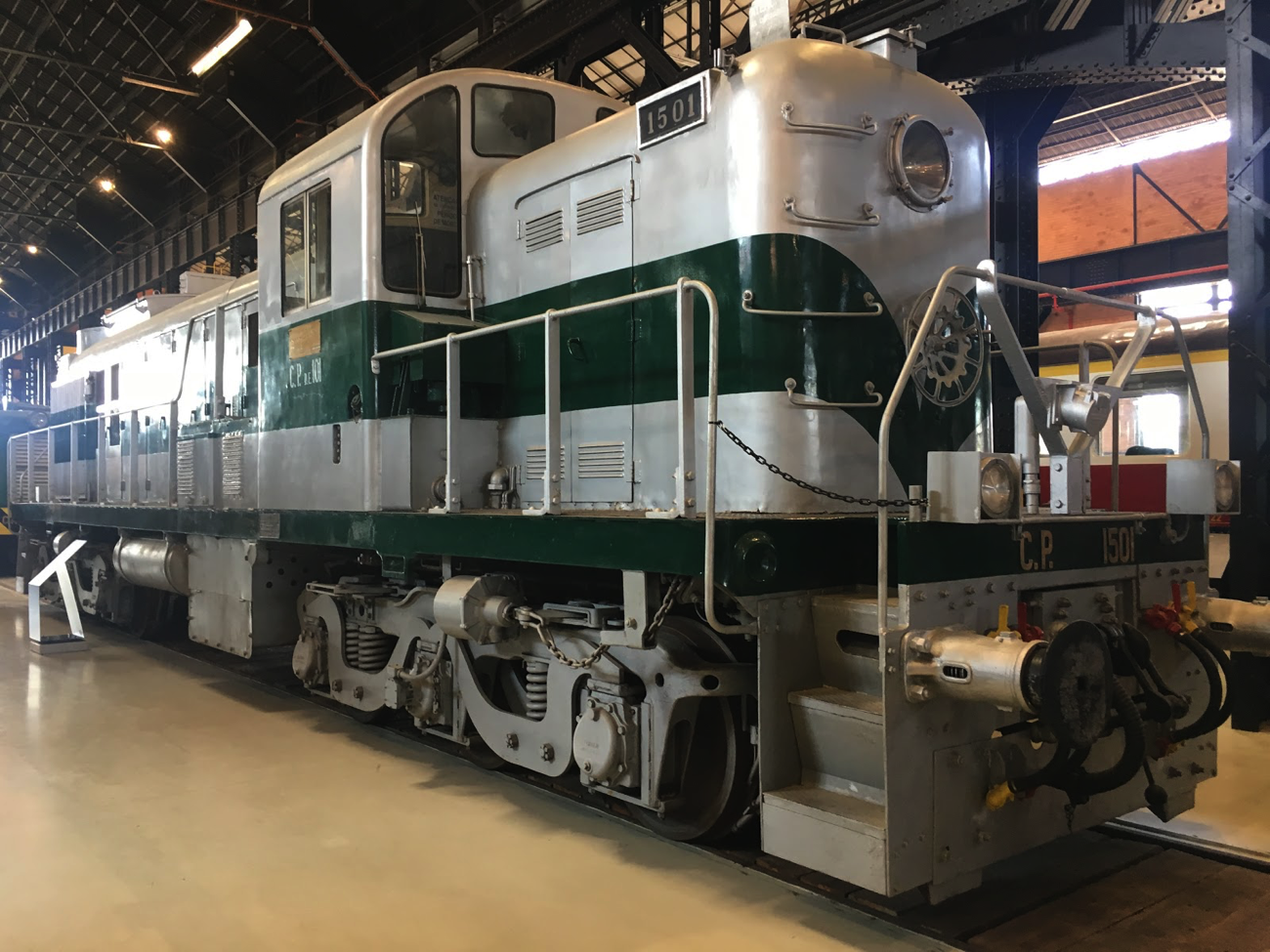Believe it or not, this Maine-sized country of 11 million people has a well-preserved Alco RSC2.
The Comboios De Portugal, the state-owned rail system of 1,700 miles, operated it for more than 50 years before it attained museum status. The largely broad gauge, five-foot, five-inch, network covers the bases from operations on what would be tourist lines to high speed freight and passenger routes.
In Entroncamento, a still-active railroad shop town about 70 miles north of capital city Lisbon lies the country’s National Railway Museum which contains 36,000 objects, with rolling stock and locomotives, three buildings, a working turntable and railroad operation artifacts.
The gem of the collection to North American railfans would be Portugal’s preserved Alco RSC2, one of two on exhibit in the world. The other is an ex-Milwaukee Road RSC2 at the Illinois Railway Museum.
At World War II’s end, the paucity of available coal was a huge problem for Portugal, which meant that it needed diesels badly. Alco Schenectady delivered and built 12 units for export to the Portuguese Railways in 1948 as part of the Marshall Plan.
While No. 1501’s U.S. cousins were operated in freight service on the Milwaukee Road, Seaboard, Soo Line, and Union Pacific, Portugal’s 1500 Class was used in dual service, including crack passenger trains. Geared for 75 miles per hour and 1,500-hp at the onset, they were different from any previous locomotives in Portugal. Unlike the sophisticated diesel customer dictates of today with specific requirements, these were basically the same units as the U.S. assembly line units, albeit delivered with vacuum brakes and buffers.
The locomotives’ first assignment was from Lisbon over steep grades to Porto, about 200 miles north. The Alcos knocked off 1925 Herschel and Sohn German-built Pacifics from that run and eliminated a few helper districts for good measure.
Working in dual service, they handled freight trains and the Silver Arrow Express between Lisbon and the Porto area, although they were prohibited from using The Ponte Maria D. Bridge given their axle loadings.
This Gustave Eiffel 1,150-foot single-track bridge, 200 feet above the Douro River was deemed too spindly for the Alcos. The silver and green Heritage scheme in the pictures was from the era when the Silver Arrow was comprised of RSC2s as power, pulling Budd-licensee built passenger cars. As delivered in 1948, the engines were dark green with a silver band; the reverse was to blend in better with the stainless steel cars they pulled.
As the years progressed, the RSC2s’ assignments changed. The electrification of the Lisbon-Porto main line rendered them unnecessary, and they were then redeployed to the lines south and west of Lisbon. In 1973, the 12 units were upgraded to 2,000-hp by the Barreiro Shops, across the Tagus River from Lisbon, and served the rest of their working lives in all services, from passenger locals to maintenance-of-way.
Increasing electrification marginalized the locomotives further until Portugal retired them in 2000 after 52 years of service.

















An Alco RSC-2 operated on the New Hope and Ivyland in the 1990s as number 1513. I got to take a cab ride. It was privately owned and, as I recall, had previously worked for a power company, I think in Florida. It arrived on the property in faded orange and blue and was repainted in a new, very attractive maroon with black and yellow stripes, which the NHIR still uses. It left the railroad a number years ago and I don’t know what became of it.
Also I believe there is another RSC-2 on display in Utica, NY, owned by the Adirondack Rwy. Preservation Society.
I visited the museum on April 15, 2017. There is also an ALCO 2-8-2 CP855 on display. It looks like an Indian Railways CWD 2-8-2 built by MLW during WW2, the drawings having been sent south. Portugal, Spain and India all run on 66″ track and use vacuum brakes and European couplings.
Are you sure than only two RSC-2’s are left? Doesn’t Danbury Railroad Museum have an ex-SAL RSC-2?
Wow! And now I wonder what else is in that museum???